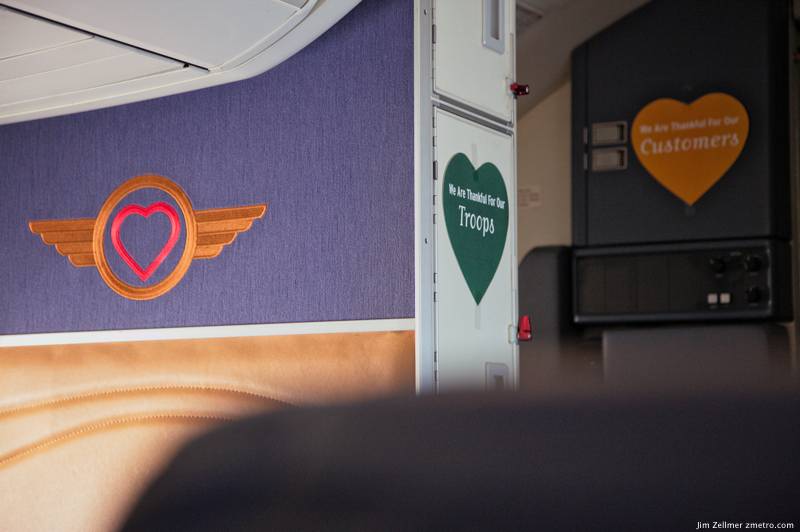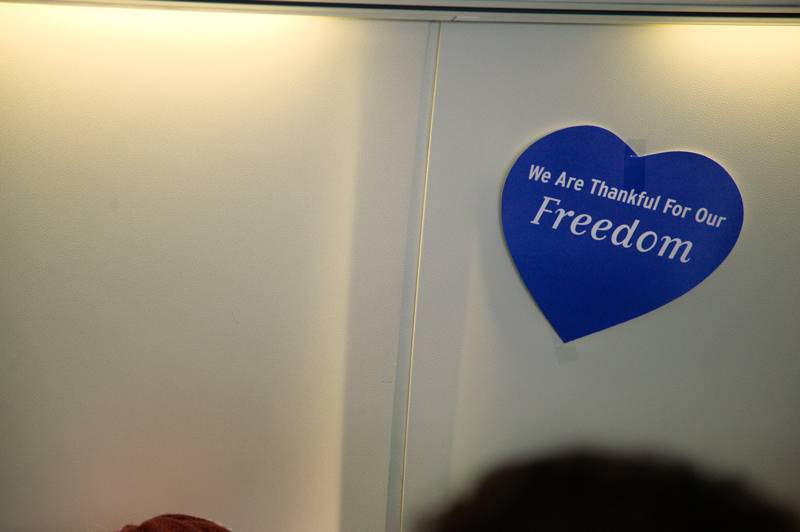When Daniel Carlat, a psychiatrist in Massachusetts, was flown to New York with his wife by Wyeth, the “training” weekend he attended in a luxury hotel was topped off with a Broadway show. It was early 2001 and he had just agreed to the US pharmaceuticals company’s proposal that he give talks to doctors about its antidepressant Effexor.
During the following year, he was regularly paid fees of $750 a time to drive to “lunch and learn” sessions where he would speak for 10 minutes to emphasise the drug’s advantages to fellow doctors, using slides prepared by the company. “It seemed like a win-win,” he recalls. “I was prescribing it, educating doctors and making some money.”
But within a few months, he became disillusioned with his co-option as a marketing representative. He was selectively presenting clinical data that put the drug in a positive light to physicians who had been targeted by the company through “data mining” techniques that identified their individual prescription patterns.
Category: Business
Oil & Water, Jet Fuel & Labor
On June 25, 2008 I blogged asking the question: Is Oil A Cancer Or A Cure? At that time, the price of a barrel of oil had not yet reached its apex of $147 per barrel, but was well on its way. Based on findings by the Air Transport Association’s superb economic analysis team led by chief economist John Heimlich, the U.S. airline industry paid the equivalent of $174.64 per barrel [price of a barrel of oil plus the equivalent cost to refine crude into jet fuel (the crack spread)] on July 11, 2008. By December 23, 2008 the price of a barrel of West Texas Intermediate had fallen to $30.28 per barrel. So far in 2011, we’ve seen a similar surge in oil prices, but based on current geopolitical events, I am not expecting another $117 drop in the price of a barrel of oil like we witnessed in 2008.
I’m actually wondering what happens if the wave of Mideast political upheaval washes over Algeria? Or Saudi Arabia? Some economic experts say the price of oil could rocket past the $200 threshold.
In 2011, the industry has paid an average of $89.15 per barrel of crude and another $25.80 in the crack spread for a total cost of “in the wing” jet fuel of nearly $115 per barrel. Since February 22, 2011 the industry has paid more than the equivalent of $120 per barrel for jet fuel. On March 1, 2011 the industry paid the equivalent of $132.17 per barrel for jet fuel including the crack spread of $32.54. For all of 2008, the industry paid the equivalent of $25 per barrel to refine crude into jet fuel. In the last five days of trading the crack spread paid by the industry is nearly $30 per barrel.
Angela in Wunderland: What Germany’s got right, and what it hasn’t
THE West has rightly marvelled at China’s economic miracle. Less noticed is a minor miracle in its own midst. It is time to pay attention to Germany’s new Wirtschaftswunder.
Germany had a savage recession as manufacturing orders dried up, but its economy has since bounced back strongly, expanding by 3.6% last year, far faster than most other rich economies. For sure, this was partly a “bungee effect” after a particularly deep downturn, but it is no one-year wonder. By several measures, including keeping unemployment down (it is at its lowest since 1992) and the prosperity reflected in the growth of GDP per head, Germany was the star performer among the rich G7 countries over the past ten years (see article). Germans entered 2011 in their most optimistic mood since 2000, according to Allensbach’s polls. Business confidence is at its highest since the Ifo institute began tracking it 20 years ago.
What’s Germany’s secret? It helps that the country did not experience a property or credit bubble, and that it has kept its public finances admirably under control. But above all Germany’s success has been export-driven: unlike most other big rich economies it has maintained its share of world exports over the past decade, even as China has risen.
Three faces of India (and two faces of Tata)
I STARTED the day on Tuesday by visiting Tata’s steelworks in Jamshedpur. I found it awe-inspiring. The scale is mind-blowing: 2.5 hectares of industrial muscle. Even more mind-blowing is the steelmaking process itself: the giant cauldrons of molten steel, the huge trains shifting raw materials about, the fashioning of the molten steel into iron sheets. Three things struck me in particular. First, the relatively small number of people involved. Though based in a relatively poor company, this is a high-tech, high-skill, highly mechanised process. Second, the intelligence and enthusiasm of the people I talked to. These people love to talk about steel! And they love to recite war stories from their visits to other steel mills! (I apologise if I lost the plot every now and again). And third, the smoothness of the organisation. Every process seemed to be perfectly choreographed, and everybody seemed to know their role. Tata Steel has reduced its workforce from 78,000 in the mid-1990s to 35,000 today, while quadrupling the amount of steel it produces. We need a similar revolution in the public sector.
Value of being ‘Made in Italy’
In Palazzo Strozzi, a Renaissance palace overlooking Florence’s Arno River, Ferruccio Ferragamo, scion of luxury shoe brand Salvatore Ferragamo, is explaining why his shoes are “Made in Italy”.
Mr Ferruccio’s father, Salvatore, put handmade shoes on the feet of Marilyn Monroe and Sophia Loren, Lauren Bacall and Judy Garland. But his son is supposed to be living in different times, where rising Chinese and Indian manufacturing power has put Italians out of business.
When Mr Ferruccio meets the Financial Times in December, he has another problem on his mind. He is having to ask Ferragamo’s workers, dotted in villages and factories around Florence, to keep working right up until Christmas day, almost a week longer than usual.
“We cannot make enough to keep up with the demand from the Chinese. They want their shoes not just made in Italy, but often made in Florence,” he says.
A decade ago, many economists and industrialists, in Italy and outside, were convinced that the myriad small and medium-sized businesses that make up the backbone of the country’s economy were in terminal decline. The Italians could not compete with rival manufacturing bases in Asia. Their productivity was too low and too costly. They did not have the infrastructure or heft to export their goods in the volumes necessary to ensure their survival.
In the life of the Foxconn young workers
Under the Christmas tree, some of us will hopefully find a great Iphone 4 32G, an amazing 9.7 inch Ipad 3G, a Dell netbook, a Sony PSP® or a Nokia N8 smartphone. On the user manual, it shall be written how to handle it but certainly not how it has been made. Today, La Vie French magazine publishes a long story (including side boxes here and here) about life at Foxconn, main Apple’s supplier. Sorry, it’s only in French but let me propose you my comment in English.
Despite tragic suicides (14 officially – one last November, yet much lower than in others fims like France Telecom but when it comes to very young people in such a guarded area, it raises questions) and several promises for pay rises, Foxconn is still compared by Hong-kong ngo Sacom, as a “labour camp”. How come?
So I went there in May and then back again lately, to check what really changed during this 6 months period of time. Salary is now high, better than any other factory around, but happiness is still not here, whatever swimming pool or tennis court you might have seen on tv, owing to Foxconn p.r. Is it due to Foxconn’s military discipline (typically taiwanese, i have been told) ? to a rather hostile environnement (huge dorms, huge factory) that doesn’t match with young workers expectations?
Southwest’s Great Culture


We are fortunate to have Southwest serving Milwaukee. Madison service would be that much better, of course.
Rupert Murdoch Does Another Daily
Some of us count sheep, but Rupert Murdoch spends his sleepless nights dreaming up media properties.
It was late May, around 2 a.m., and Murdoch was in his New York penthouse on Fifth Avenue having a tough time falling asleep when a vision came to him: publishing a daily news report that would be exclusively made for the iPad and other tablet devices. There would be no print product.
Murdoch had done his homework, so he already knew that readers spend more time fully immersed with the iPad than they do with the Web. He believes that within a few years, tablet devices will be like cell phones or laptops — consumers will go into Wal-Mart and buy the things at reasonably cheap prices (far more diminished than the $499 for an iPad now). In his mind, in the not-too-distant future, every member of the family will have one.
Makes perfect sense. Horace Dediu has more.
Is OpenTable Worth It?
We’ve often been asked why Incanto is not listed on OpenTable.com. For those of you not familiar with the service, OpenTable is the most successful online restaurant reservation portal on Earth; a place on the Web where diners can search for and make reservations at leading restaurants, via a browser or smartphone. Restaurants like Incanto that chose not to offer their seats through OpenTable find themselves in a shrinking minority.
Let me start by stating the obvious: the convenience and immediacy of booking a table online anytime day or night is beneficial to both diners and to restaurants. This was my belief nine years ago, when we first approached OpenTable to inquire about becoming one of its early customers. It’s also why we have found a way to offer Web-based reservations, through our own website, since we opened and why we’ve kept current and revisited OpenTable’s offerings each year, to re-visit our decision.
It’s possible, however, for convenience to come at too dear a price. I don’t mean that only as it relates to the short-term economic price, but also in the sense that sometimes, what may at first seem like a straightforward benefit can in fact require the sacrifice of something much more precious over the long run. That judgment has always been at the core of our concerns about OpenTable, which has to its credit done such a masterful job building its business that it now holds the dominant position here in the U.S. among providers of online reservation services, with a market share estimated at greater than 90%. Whether or not your restaurant is an OpenTable customer, it’s impossible not to feel its impact.
Scientists unveil moving 3D holograms
More than 30 years after the famous Star Wars movie scene in which a hologram of Princess Leia appealed for help from Obi-Wan Kenobi, US researchers have unveiled holographic technology to transmit and view moving three-dimensional images.
The scientists at the University of Arizona say their prototype “holographic three-dimensional telepresence” is the world’s first practical 3D transmission system that works without requiring viewers to wear special glasses or other devices. The research is published in the journal Nature.
Potential applications range from telemedicine and teleconferencing to mass entertainment.
“Holographic telepresence means we can record a three-dimensional image in one location and show it in another location, in real-time, anywhere in the world,” said Nasser Peyghambarian, project leader.
Existing 3D projection systems produce either static holograms with excellent depth and resolution but no movement – or stereoscopic films, such as Avatar, which give the perspective from one viewpoint only and do not allow the viewer to walk around the image. The new technology combines motion with an impression of genuine solidity.